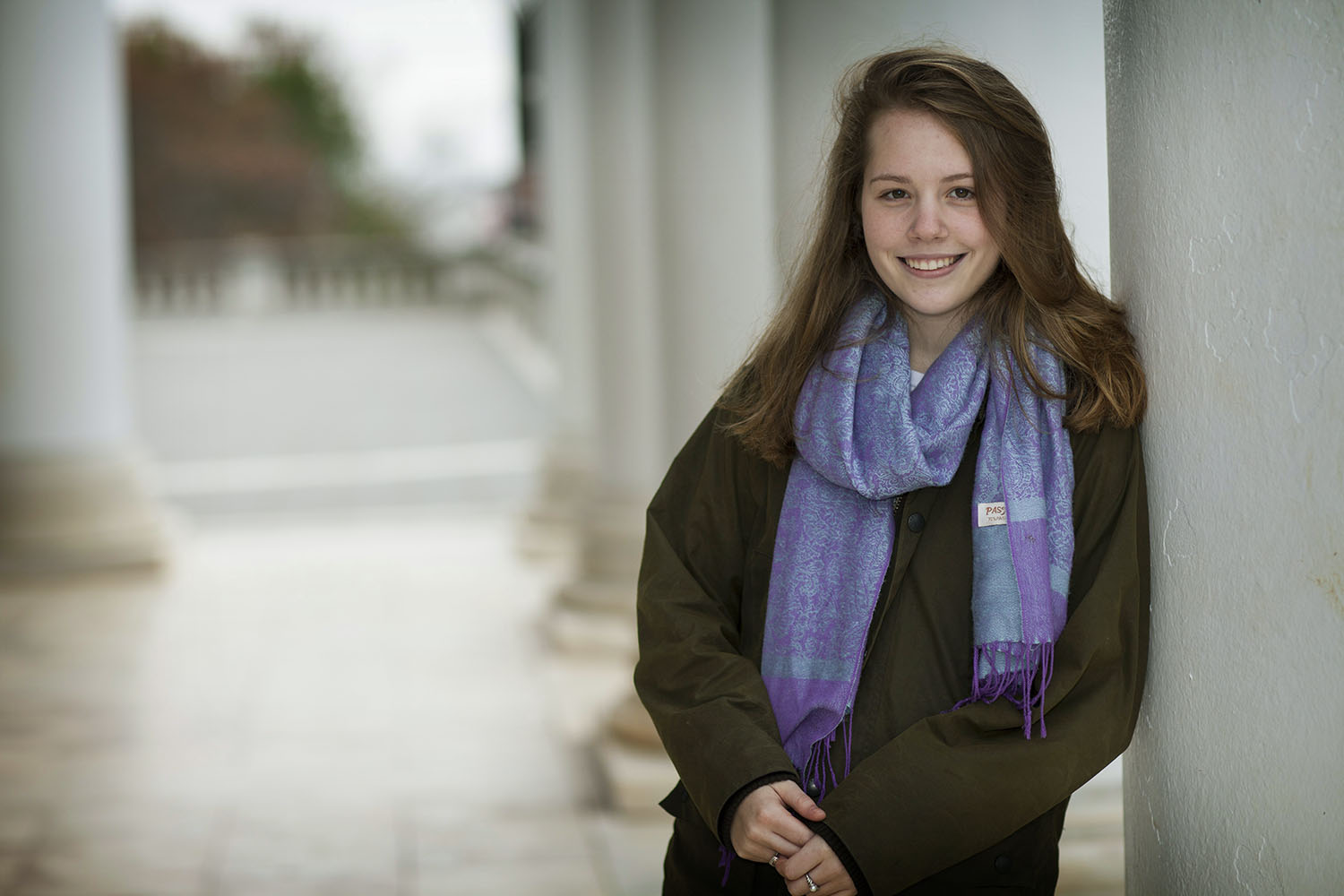Hard economic times increase the stress on local food banks. University of Virginia student Nicole Muller is trying to help with her own personal campaign to raise food donations.
Muller, 19, a second-year politics major in the College of Arts & Sciences , has entered the fourth year of a food drive she started as a high school junior. So far, she has raised more than 500,000 pounds of food for local food banks across the nation through her Neighbor-4-Neighbor program.
While a student at Western Albemarle High School in Crozet, Muller got involved after reading about how the recession was stressing local food banks, with more people seeking food and fewer people donating.
“I was looking for something to do to give back to the community,” she said.
She started simply, emailing people in her neighborhood and asking for donations to the Blue Ridge Area Food Bank. Then she started emailing local people she knew outside her immediate neighborhood and the email chain spread. Then she grew ambitious and started emailing people all over the country, asking them to donate to their local food banks. If she did not know someone in a state, she emailed the governor.
She has raised more than 50,000 pounds of food for the Blue Ridge Area Food Bank alone, according to Larry Zippin, its chief executive officer.
Muller asks food donors and food pantries to self-report to her, so she can track the donations. She tracks food by weight, with a $1 donation translating to about 5.2 pounds of food wholesale.
“People can submit a form that I provide to them via email to their local food banks that alerts the food bank to email me with the total weight when food donations are turned in as part of my food drive initiative,” Muller said. “Most food banks weigh their donations. I also request that donors email me directly with their weight or monetary donation amounts, as sometimes food banks are too busy and forget to inform me.”
In 2011, Glamour magazine listed Muller among the "21 Amazing Young Women" for her work. While the publicity helped her cause, “The main thing, however, was the local recognition, such as the local Kiwanis,” she said. “I did a radio commercial for the food bank that was broadcast on local radio stations.”
“She’s a remarkable young woman who started a food drive when she was in high school and kept it going,” Zippin said. “Clearly she started something and stuck with it.”
Zippin said Muller’s contribution to the Blue Ridge Area Food Bank puts her in the spot for the top individual food drive and on par with some of the major food drives sponsored by the Post Office, area businesses and the Boy Scouts.
“For a young lady to do all of this is an accomplishment,” he said.
The number of people seeking help from the food bank has increased by about 16 percent over the past year, but the two largest sources of donations, food manufacturers and the federal government, have cut back on donations, Zippin said. Manufacturers have less surplus because of tighter quality control, and the U.S. Department of Agriculture has reduced its donations by 25 percent, he said.
An increase in fresh produce donated to food banks directly from farmers has helped some, but the food bank increasingly must rely on donations from people like Muller to bolster its stock of non-perishable food.
Zippin said the Blue Ridge Area Food Bank distributes about 22 million pounds of food a year and feeds about 120,000 people per month, in an area that covers 25 counties and nine cities.
Muller said her food drive has grown beyond her wildest expectations. “I began the national drive in October 2009 and by December 2009, had collected nearly 2.5 tons of food, surpassing my original goal of 500 pounds by the end of 2009,” she said.
She plans to continue her food-raising campaign.
Media Contact
Article Information
December 18, 2012
/content/undergraduate-continues-collect-tons-food-hungry

